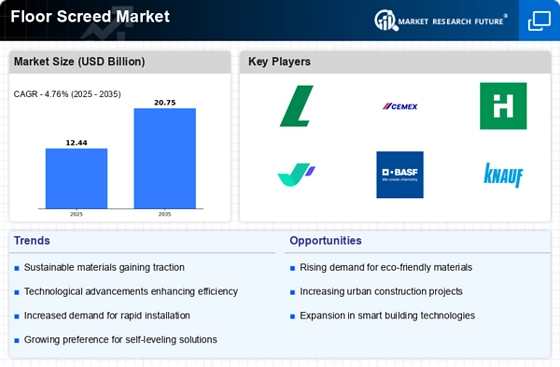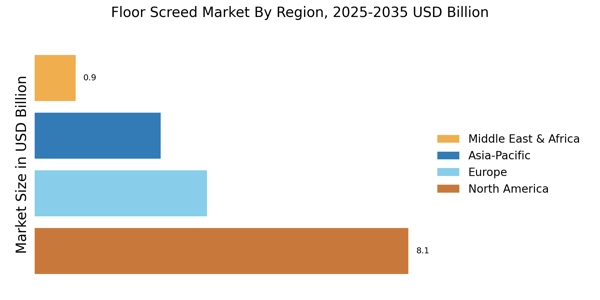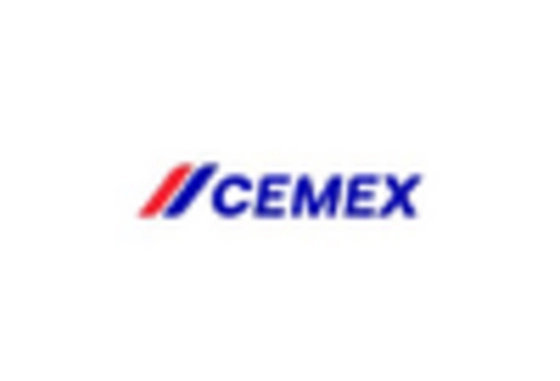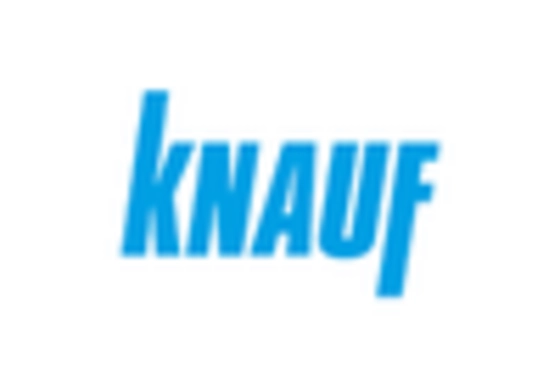Rising Construction Activities
The Floor Screed Market is experiencing a notable surge due to increasing construction activities across various sectors. As urbanization continues to expand, the demand for residential, commercial, and industrial buildings rises. According to recent data, construction output is projected to grow at a compound annual growth rate of approximately 5% over the next few years. This growth is likely to drive the need for high-quality floor screed solutions, which are essential for providing a durable and level surface in new constructions. Additionally, renovation projects in existing structures further contribute to the demand for floor screed, as property owners seek to enhance aesthetics and functionality. Consequently, the rising construction activities are a pivotal driver for the Floor Screed Market.
Increased Focus on Energy Efficiency
The Floor Screed Market is significantly influenced by the growing emphasis on energy efficiency in building designs. As energy costs continue to rise, builders and architects are increasingly seeking materials that contribute to thermal insulation and energy conservation. Floor screeds, particularly those with insulating properties, are becoming essential in modern construction practices. Data indicates that energy-efficient buildings can reduce energy consumption by up to 30%, making them attractive to both developers and end-users. This trend is likely to propel the demand for advanced floor screed solutions that align with sustainability goals. As a result, the increased focus on energy efficiency is a crucial driver for the Floor Screed Market.
Technological Innovations in Materials
The Floor Screed Market is witnessing a transformation driven by technological innovations in materials. Advances in formulation and production techniques have led to the development of high-performance screeds that offer enhanced durability, faster curing times, and improved workability. For instance, the introduction of self-leveling screeds has revolutionized the application process, reducing labor costs and time. Market data suggests that the adoption of these innovative materials is expected to increase by approximately 15% annually, as contractors and builders recognize the benefits of using advanced screed solutions. This technological evolution is likely to play a significant role in shaping the future of the Floor Screed Market.
Regulatory Standards and Building Codes
The Floor Screed Market is significantly impacted by evolving regulatory standards and building codes that emphasize quality and safety in construction. Governments and regulatory bodies are increasingly mandating the use of specific materials and practices to ensure structural integrity and sustainability. Compliance with these regulations often necessitates the use of high-quality floor screeds that meet stringent performance criteria. Data shows that regions with stricter building codes experience a higher demand for certified screed products, as builders seek to avoid penalties and ensure compliance. Consequently, the influence of regulatory standards is a vital driver for the Floor Screed Market.
Growing Demand for Aesthetic Flooring Solutions
The Floor Screed Market is increasingly driven by the rising demand for aesthetic flooring solutions. As consumers become more discerning about interior design, the need for visually appealing and functional flooring options has surged. Floor screeds can be customized with various finishes, colors, and textures, making them an attractive choice for both residential and commercial applications. Recent surveys indicate that approximately 40% of homeowners prioritize aesthetics when selecting flooring materials. This trend is likely to encourage manufacturers to innovate and offer a wider range of decorative screed options, thereby fueling growth in the Floor Screed Market.


















Leave a Comment